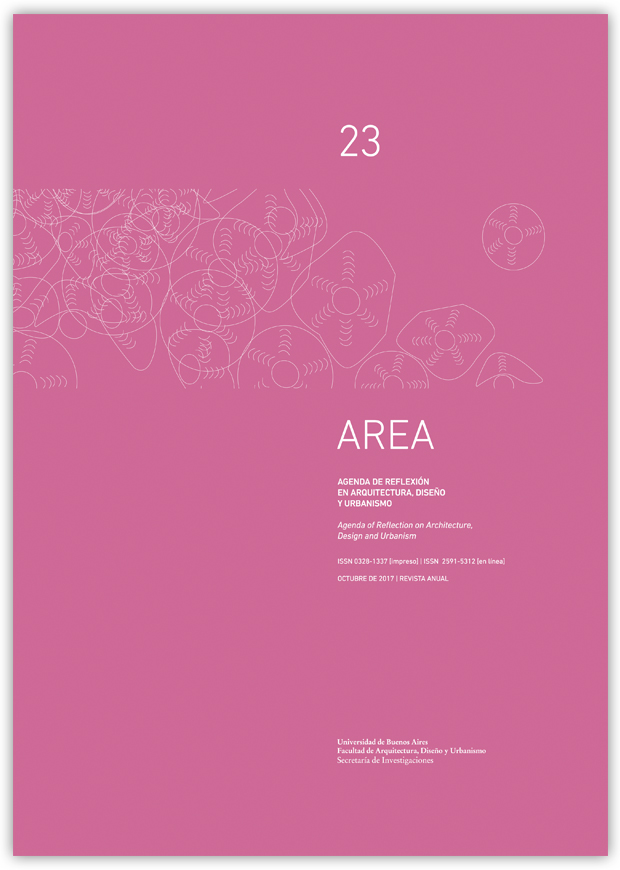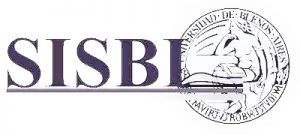Pautas para una arquitectura del futuro. Reyner Banham y la tecnología para un entorno bien climatizado
Palabras clave:
Historia de la arquitectura, Reyner Banham, TecnologíaResumen
En los últimos años, un segmento importante del debate arquitectónico se ha concentrado en la relación de la disciplina con la tecnología, revisando en particular las lecturas sobre la incorporación de innovaciones en el siglo xx. En este contexto interpretativo es posible identificar el carácter innovador de uno de los textos más polémicos de la década de los sesenta, The Architecture of the Well-tempered Environment, en el que Reyner Banham cuestionó las interpretaciones canónicas de la historia de la arquitectura por ignorar a la tecnología como factor de cambio. El presente artículo busca comprender la compleja red de circunstancias que signaron sus ideas, así como el profundo debate generado tras su publicación.
Descargas
Citas
BANHAM, R. (1996). A critic writes: essays by Reyner Banham. Berkley: University of California Press.
———. (1982). Scenes in America deserta. Salt Lake: Peregrine/Gibbs Smith.
———. (1976). Megaestructures, urban futures of the recent past. Nueva York: Harper & Row.
———. (1971). Los Angeles, the architecture of four ecologies. Londres: Penguin Press.
———. (1969a). The architecture of the well-tempered environment. Chicago: University of Chicago Press. [Edición en castellano: (1975). La arquitectura del entorno bien climatizado. Buenos Aires: Ediciones Infinito].
———. (1969b). Problemas de historia ambiental. Córdoba: IIHA.
———. (1966). New Brutalism: Ethic or Aesthetic? Nueva York: Reinhold Publishing Corporation. [Edición en castellano: (1967). El Brutalismo en Arquitectura ¿Ética o Estética? Barcelona: Gustavo Gili].
———. (1965). A home is not a house, Art in America (2), pp. 70-79.
———. (1961). The History of the Immediate Future, Journal of the Royal Institute of British Architects 68(7), pp. 252-269.
———. (1960). Theory and design in the first machine age. Nueva York: Praeger. [Edición en castellano: (1965). Teoría y diseño arquitectónico en la era de la máquina. Buenos Aires: Nueva Visión].
———. (1955, diciembre). The New Brutalism, Architectural Review, pp. 355-361.
CARPO, M. y LEMERIE, F. (eds.). (2005). Perspective, projections, projet: techniques de la représentation architectural. París: Monum.
CHANG, J-H. y WINTER, T. (2015). Thermal Modernity and Architecture, The Journal of Architecture 20(1), pp. 92-121.
COLQUHOUN, A. (1988).
Reyner Banham: una lettura per gli anni ottanta, Domus (698),
pp. 17-24.
FERNÁNDEZ GALIANO, L. (2015). Climas arquitectónicos. An environmental bibliography, Arquitectura Viva (178), pp. 52-55.
———. (1991). El fuego y la memoria: sobre arquitectura y energía. Madrid: Alianza Editorial.
FRAMPTON, K. (1976). On Reyner Banham’s The Architecture of the Well-tempered Environment, Oppositions (7), pp. 86-89.
———. (1970). Labour, Work and architecture, en JENCKS, Charles; BAIRD, Georges. Meaning in architecture. Nueva York: George Braziller, pp. 151-168.
FRY, M. y DREW, J. (1964). Tropical architecture in the dry and humid zones. Nueva York: Reinhold Publishing.
GANNON, T. (2017). Reyner Banham and the paradoxes of High Tech. Los Angeles: Getty Publications.
GIEDION, S. (1948). Mechanization takes command, a contribution to anonymous history. Nueva York: Oxford University Press.
HANDLIN, D. (1971). Beneath the Surface: The Architecture of the Well-Tempered Environment by Reyner Banham, The American Scholar, 40(2), pp. 356-361.
HARRIES, S. (2011). Nikolaus Pevsner, the life. Londres: Chatto & Windus.
HITCHCOCK, H-R. (1958). Architecture, nineteenth and twentieth centuries. Baltimore: Penguin Books.
KOUWENHOVEN, J. (1970). Architecture as Environmental Technology, Technology and Culture, 11 (1), pp. 85-93.
LANFRANCO VÁZQUEZ, M. L. (2011). Ideas sobre ambiente durante la década de 1960, Revista Derecho y Ciencias Sociales, (4), pp. 176-189.
LANGEVIN, J. (2011). Reyner Banham: in search of an imaginable, invisible architecture, Architectural Theory Review, 16 (1), pp. 2-21.
LE CORBUSIER. (1923). Vers une architecture. París: Éditions Crès.
MALDONADO, T. (1969). La Speranza progettuale: ambiente e società. Torino: Einaudi.
MARSTON-FITCH, J. (1970). The Architecture of The Well-Tempered Environment by Reyner Banham, Journal of the Society of Architectural Historians, 29 (3), pp. 282-284.
MEDINA WARMBURG, J. et al. (2015). The Construction of Climate in Modern Architectural Culture, 1920-1980. Madrid: Lampreave.
MUMFORD, L. (1934). Technics and Civilization. Brace: Harcourt.
NASELLI, C. (2007). Seminario de Reyner Banham y la arquitectura ambientalista adecuada a su contexto, en AA.VV. El IIDEHA. Historia de la arquitectura en la Argentina, reflexiones de
medio siglo. 1957-2007. Tucumán: CEDODAL, pp. 49-51.
OLGYAY, V. (1963). Design with Climate. Bioclimatic Approach to Architectural Regionalism. Princeton: Princeton University Press.
PEVSNER, N. (1936). Pioneers of the modern movement from William Morris to Walter Gropius. Londres: Faber & Faber.
PICON, A. (2008). Notes on Modern Architecture and Technology, Positions (0), pp. 78-83.
RAPOPORT, A. (1969). House, form and culture. Englewood Cliffs: Prentice-Hall.
REQUENA-RUIZ, I. (2016). Building Artificial Climates. Thermal control and comfort in Modern Architecture (1930-1960), Ambiances [Online].
RUDOFSKY, B. (1964). Architecture without architects. A Short Introduction to Non-Pedigreed Architecture. Garden City: Doubleday.
SHMIDT, C. (2016). “Would this be of your interest?” Los seminarios de Banham en Argentina y el debate sobre el control ambiental en 1968, Bitácora arquitectura (33), pp. 118-125.
SORENSEN, L. (s/f.) “Banham, Reyner”, en Dictionary of Art Historians [online]. Recuperado de http://www.dictionaryofarthistorians.org/banhamr.htm (Consulta: 4 de abril 2017).
TOURNIKIOTIS, P. (2001).
La historiografía de la arquitectura moderna. Madrid: Mairea y Celeste.
WAISMAN, M. (1989). Reyner Banham (1922/1988), Summa (257/258).
———. (1968). IIDEHA 68: Reyner Banham, Summa (13), pp. 19-20.
WHITELEY, N. (2002). Reyner Banham, historian of the inmediate future. Cambridge: MIT Press.
———. (1990). Banham and “Otherness”: Reyner Banham (1922-1988) and his Quest for an Architecture Autre, Architectural History (33), pp. 188-221.
ZEVI, B. (1945). Verso un’architettura organica. Torino: Einaudi Editore.
Descargas
Publicado
Cómo citar
Número
Sección
Licencia

© 1992-2025 – Revista AREA, su sitio, contenidos y metadata están bajo licencia de Acceso Abierto CC BY-NC-ND 2.5 AR








